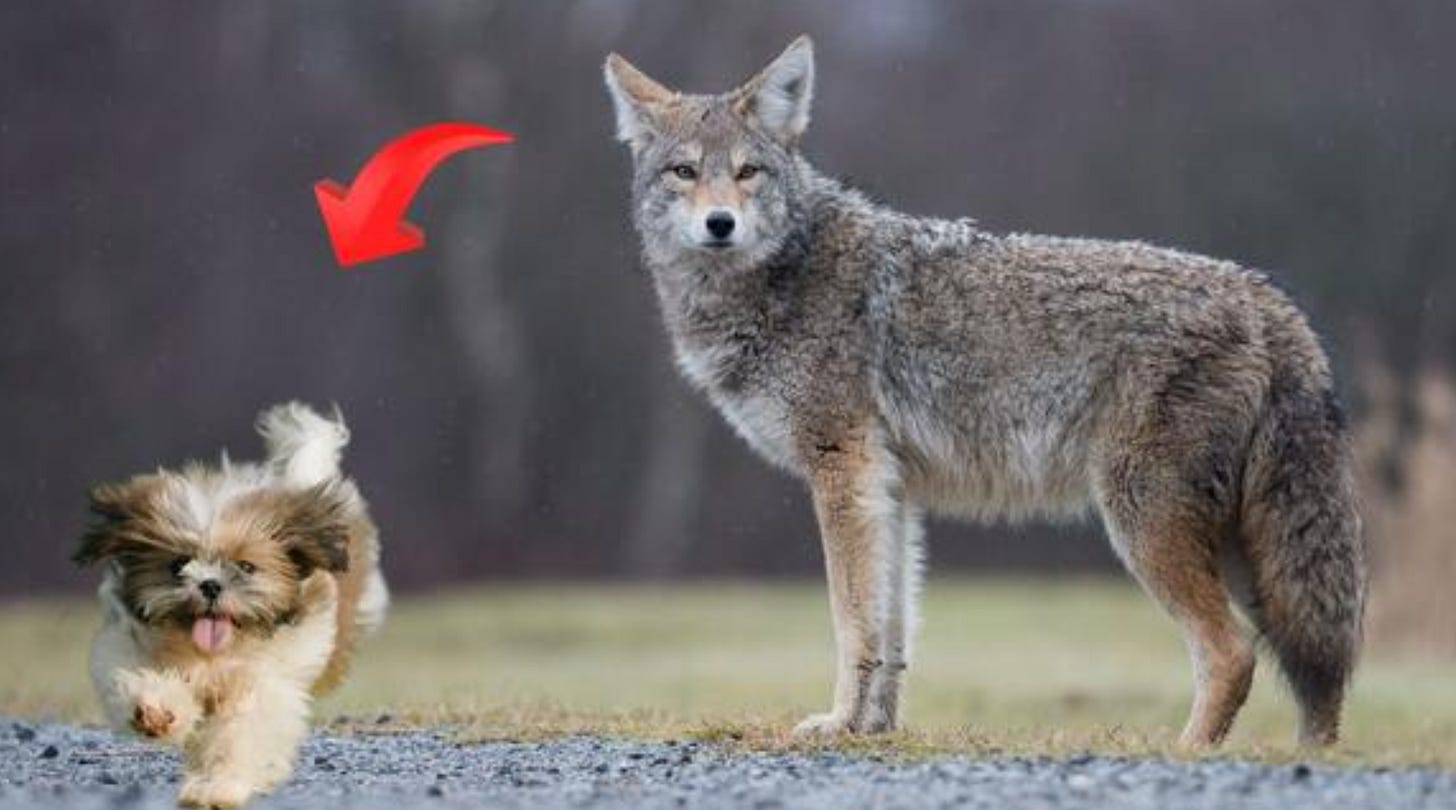What To Do If You Encounter A Coyote During The Day
Coyotes can become more aggressive towards dogs and people with dogs during this time.

With spring upon us, the wildlife that can be commonly found in Massachusetts begins to become more active. However, while it is always a delight to see the beautiful birds gather around the feeder or catch a glimpse of a deer moving through your backyard, there are some animals in our state that people generally do not want to see. Included in this list is the coyote, which in recent years have become more common to see in settled areas around the Bay State.
Though coyote mating season has come to an end, they are now in the middle of what is called "coyote denning" season. From April through May, coyotes in Massachusetts enter a period called "denning". During this time, they establish a den, give birth to their pups (typically 4 - 8), and begin to raise them. As could be expected, and like with the mating season, coyotes can become more aggressive towards dogs and people with dogs during this time.
While it is good to be aware of what times of the year coyotes may be more active, it is also important to know that daytime coyote sightings have been becoming more common in general in recent years. Just last year, a video was released showing a woman and her dog being chased by a coyote who had jumped a fence in a suburban neighborhood. Furthermore, I have personally witnessed multiple instances of coyotes getting very close to my and my neighbors' homes during the daytime.
With the apparent increase in coyote activity, it is more important than ever to know the facts about how dangerous coyotes really are and the proper steps that should be taken to protect yourself and your pets.
Tips To Prevent Conflicts With Coyotes
Although coyotes thrive in rural, suburban, and urban areas, it is key to understand that negative encounters between coyotes and humans are very rare. An outright attack on a person, even a child, is even rarer. Coyotes can, however, be very dangerous for our beloved pets. Therefore, it is important to make sure to avoid them as best as possible.
In order to help the public prevent conflicts with coyotes, MassWildlife has posted several actionable tips:
Pets should always be directly supervised on a leash when outdoors, especially during the coyote mating season.
Coyotes can’t differentiate between their natural prey and small pets, so they will view unprotected outdoor cats and small dogs as a potential food source.
Coyotes can’t distinguish your dog from an intruding coyote, causing the coyote to be more aggressive toward medium- and large-sized dogs as they will view them as potential competition for mates and territory.
Do not supervise your pet from a distance on your porch or at your back door. Most coyote attacks involve dogs that are unsupervised or being supervised from a distance in a backyard.
2. Remove Food Sources From Property
As opportunistic omnivores, coyotes will utilize naturally available food, like small mammals and birds, and human-associated foods, like bird seed, garbage, compost, pet food left outdoors, and backyard chickens.
Coyotes that find human-associated food sources will spend more time in yards and neighborhoods. It’s essential for neighbors to work together to secure or remove all human-associated food sources in a community.
Coyotes that become dependent on human-associated food sources can start to exhibit bold behavior toward people. Never intentionally feed coyotes.
3. Haze Coyotes
While coyotes are naturally wary of people, this fear can lessen over time when they spend a lot of time around people or when they are fed, intentionally or unintentionally, by people.
When you see a coyote in your yard, you should aggressively haze it. Hazing is a safe technique used to deter an animal from an area or to change its behavior. The intent of hazing is to frighten, not injure, the animal.
You can haze a coyote by creating loud noises by yelling or using a small air horn, waving a jacket overhead to look bigger, spraying a hose, or throwing small objects in the coyote’s direction and physically chasing and driving the coyote off. Haze the animal until it has fully left the area.
Hazing will not be effective if it's done from inside a building, from behind a screen door, or from a car. Hazing is most effective when it’s done repeatedly, when a variety of techniques are used, and when many people participate.
When Should You Seek Help?
Coyotes can be active at any time of the day, so it is important to remember that daytime activity is not a sign of rabies. The chart depicted below was provided by MassWildlife to show what is considered normal coyote behavior. It is their recommendation that you should contact your local animal control officer, local MassWildlife office, or the MA Environmental Police for assistance if you are concerned about a coyote exhibiting either "very bold" or "aggressive" behaviors.

